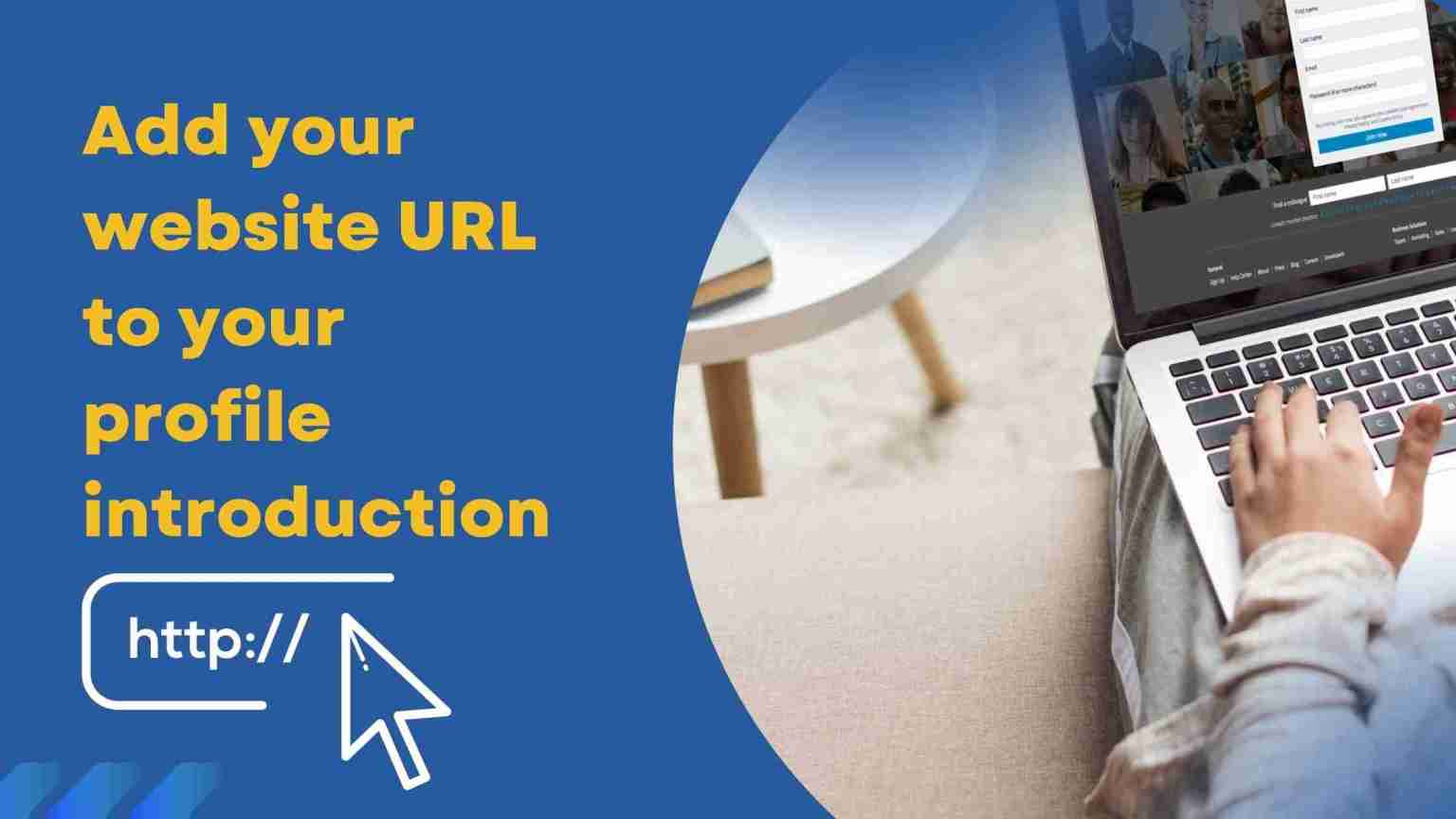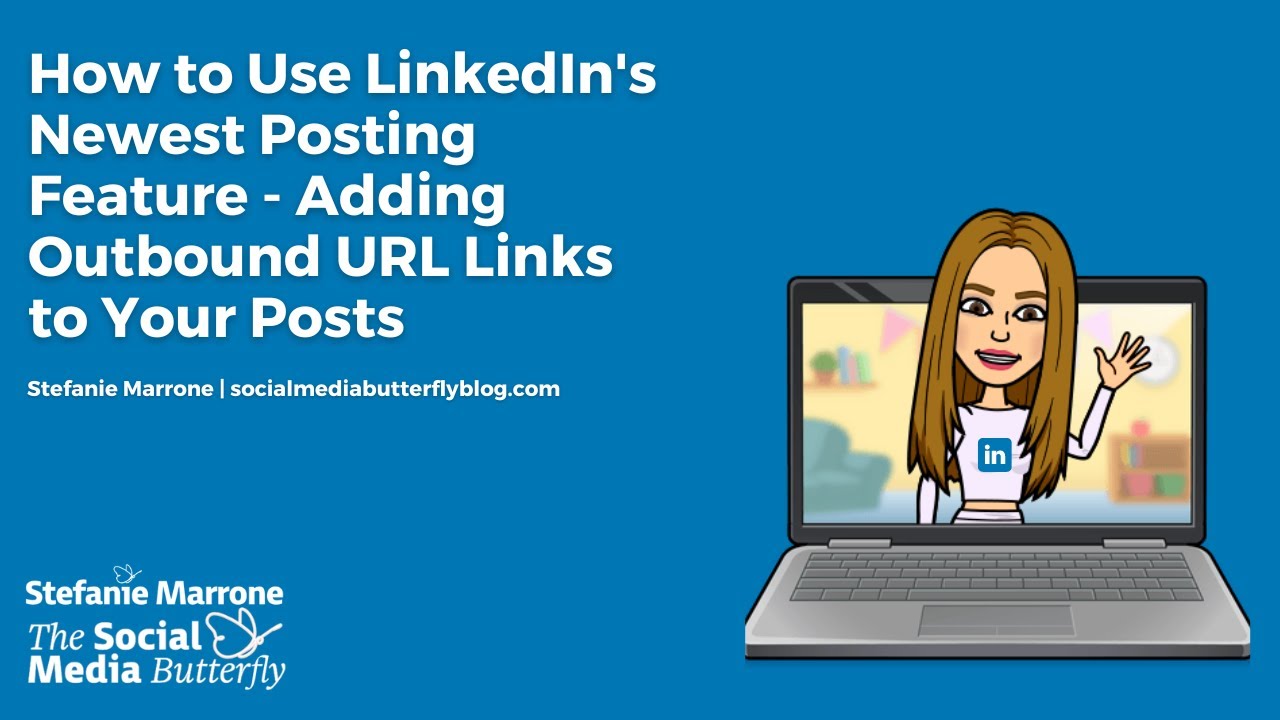Hey there! If you’re looking to boost your professional presence, optimizing your LinkedIn profile is a great place to start. Imagine this platform as your online resume that showcases not only your skills and experiences but also your personal brand. With over 700 million users, your profile isn’t just another entry; it's your chance to shine, connect, and even land your dream job! So let’s dive into how you can make the most of your profile, particularly by adding that all-important website link.
Why Adding a Website Link is Important

When it comes to enhancing your LinkedIn profile, adding a website link is like the cherry on top of an already delicious cake. But you might be wondering, why should I go through the trouble of adding this link? Well, let’s break it down:
- Showcase Your Work: A personal website often acts as a portfolio. Whether you’re a writer, designer, developer, or entrepreneur, directing people to your website allows them to see your best work and get a sense of your expertise.
- Drive Traffic: If you're running a business or blog, a link to your site can help generate traffic. You never know who might come across your LinkedIn profile and what opportunities that could create!
- Enhance Credibility: Having a polished website shows you take your professional development seriously. It reflects your commitment to your career, making you more trustworthy to potential employers or clients.
- Network Expansion: By directing visitors to your site, you may prompt visitors to engage with your content, fostering deeper connections and potentially leading to collaborations or partnerships.
- Search Engine Optimization (SEO): Including your website link can also improve your SEO. This means when people search for you or your services online, they’re more likely to find you!
In addition to all these benefits, adding a website link can make your LinkedIn profile more dynamic. It’s not just about listing your work experience; it’s about showcasing the full picture of who you are and what you offer. It opens up new dimensions for potential employers to explore your skills, interests, and the value you bring to the table.
So, ready to make your LinkedIn profile more impactful? Start by considering what website you'd like to link to—be it a personal blog, a professional portfolio, or your business homepage. The next step is to ensure it’s optimized to impress once visitors click that link!
Also Read This: How to Add Top Skills on LinkedIn to Boost Your Profile Visibility
3. Preparing Your Website Link

Before we dive into the actual process of adding a website link to your LinkedIn profile, it's essential to ensure that you have everything prepared. Taking a few moments to get your link ready can make a huge difference in how it appears on your profile and how effective it is in conveying your message. Here’s how to go about it:
- Choose the Right URL: Make sure you're using the most relevant URL for your purpose. Whether it's your personal blog, portfolio, or a company webpage, choose the link that best reflects the professional image you want to project.
- Shorten the Link (if necessary): If your URL is long and complex, consider using a URL shortener like Bitly or TinyURL. Shortened links are easier to read and can look cleaner on your profile.
- Check the Link: Always test your link to ensure it is working properly. Nothing is worse than a broken link, as it can lead to frustration for those who want to connect with you.
- Set Up a Redirect (if needed): If you've recently changed your website domain or moved content, set up a redirect from the old URL to the new one. This ensures that visitors won't hit a dead end and can still find your content.
Once you have your URL ready, it’s time to think about how it will be perceived on LinkedIn. The title or description associated with your link can greatly impact whether someone clicks on it or not. Consider what you want your visitors to know about the link and how it aligns with your professional goals.
Also Read This: Searching for 'Open to Work' Profiles on LinkedIn: A Step-by-Step Guide
4. How to Add a Website Link to Your LinkedIn Profile
Now that your website link is prepped and ready to go, let’s jump into the nitty-gritty of adding it to your LinkedIn profile. Whether you’re looking to showcase your portfolio, direct people to your business website, or share your blog, adding a link is a straightforward process. Here’s how you can do it step-by-step:
- Log In to Your LinkedIn Account: Start by logging into your LinkedIn account using your credentials. If you don’t have an account yet, you’ll need to create one. It’s quick and easy!
- Navigate to Your Profile: Click on the “Me” icon at the top of your LinkedIn homepage and select “View Profile” from the dropdown menu.
- Click on the Contact Info Section: On your profile page, look for the “Contact info” section, usually located right under your profile photo. Click on this section to open a pop-up window.
- Select “Edit”: In the pop-up window, you’ll see a pencil icon ✏️ next to your contact information. Click this icon to edit your contact details.
- Add Your Website Link: Scroll down to the “Websites” section. You can select the type of website from a drop-down menu—options include your personal website, company site, blog, etc. Paste your prepared URL in the provided field.
- Save Your Changes: After entering your website link and ensuring all information is correct, don’t forget to hit the “Save” button to finalize your changes!
And voilà! You’ve successfully added a website link to your LinkedIn profile. Take a moment to view your profile as others would see it to confirm that the link appears as you intended. Especially in a professional network like LinkedIn, every detail counts!
Now that your link is live, consider sharing posts or updates to draw attention to your website. Linking back to your profile can drive engagement and intrigue among your connections. Happy linking!
Also Read This: How to Write to a Recruiter on LinkedIn: Tips for Crafting the Perfect Message
5. Best Practices for LinkedIn Links
When it comes to adding links to your LinkedIn profile, there are several best practices you should follow to ensure your profile looks professional and serves your networking goals effectively. Here are some of the top tips to keep in mind:
- Choose Reputable Sources: Always link to credible websites, whether it's your personal blog, a company website, or a portfolio. This helps build trust with your connections and potential employers.
- Keep it Relevant: Make sure the links you add are relevant to your professional brand and the industries you are interested in. Irrelevant links can dilute your image and confuse visitors.
- Use Descriptive Anchor Text: Instead of just adding a plain URL, use descriptive text. For example, instead of saying "click here," use "Visit my portfolio." This gives context to the link and engages the reader.
- Test Your Links: Before finalizing your profile, make sure all the links work correctly. Click them to ensure they lead to the right place. Broken links can create a negative impression.
- Limit the Number of Links: Don’t overload your profile with too many links. Aim for quality over quantity—select the most relevant links that showcase your work and achievements.
By following these best practices, you'll enhance your LinkedIn profile’s effectiveness and make a stronger impression on visitors, whether they're hiring managers, colleagues, or potential clients.
Also Read This: How to View LinkedIn Profiles Anonymously Without Being Detected
6. Common Mistakes to Avoid
While adding a website link to your LinkedIn profile may seem straightforward, there are common pitfalls you can fall into. Steering clear of these mistakes can save you from damaging your professional presence. Here’s what to watch out for:
- Not Customizing URLs: LinkedIn allows you to customize your profile URL. If you still have the default URL (which includes random numbers and letters), take a minute to personalize it. This makes your profile look more professional and easier to share.
- Using Outdated Links: Ensure that all the links you add are current and relevant. An outdated link can mislead your audience and diminish your professional credibility.
- Neglecting Privacy Settings: Check your privacy settings to ensure that anyone can see the links you've shared. If your profile is set to private, those viewing it may not see your valuable links.
- Using Shorteners Inappropriately: While link shorteners can be helpful for platforms like Twitter, they can appear untrustworthy on LinkedIn. Stick to the original URLs to maintain professionalism.
- Ignoring Mobile Compatibility: Remember that many users access LinkedIn from mobile devices. Always check how your links appear in the mobile view and ensure they’re user-friendly.
By avoiding these common missteps, you'll create a more effective LinkedIn profile that not only showcases your skills but also reflects your attention to detail and professional standards. Happy linking!
Conclusion and Final Tips for LinkedIn Success
In conclusion, enhancing your LinkedIn profile with a website link is a strategic move that can significantly boost your professional presence. To ensure you maximize the benefits of your LinkedIn profile, consider the following final tips:
- Keep Your Profile Updated: Regularly review and update your profile information, including your website link, to reflect your current projects and achievements.
- Engage with Your Network: Don’t just add links, actively engage with your connections by sharing content from your website or writing posts that link back to relevant pages.
- Utilize Rich Media: Beyond just a link, incorporate images, presentations, or videos that reflect your work and lead back to your site.
- Optimize Content for SEO: Ensure your website has relevant keywords and phrases that match your professional profile to drive traffic effectively.
- Monitor Your Analytics: Use tools to track clicks and engagement from your LinkedIn link to gauge interest and optimize your content strategy.
By following these tips, you will not only enhance your LinkedIn profile but also improve your visibility and connections in your industry. Stay proactive in your networking efforts, and you will see the benefits in your professional endeavors.
 admin
admin








